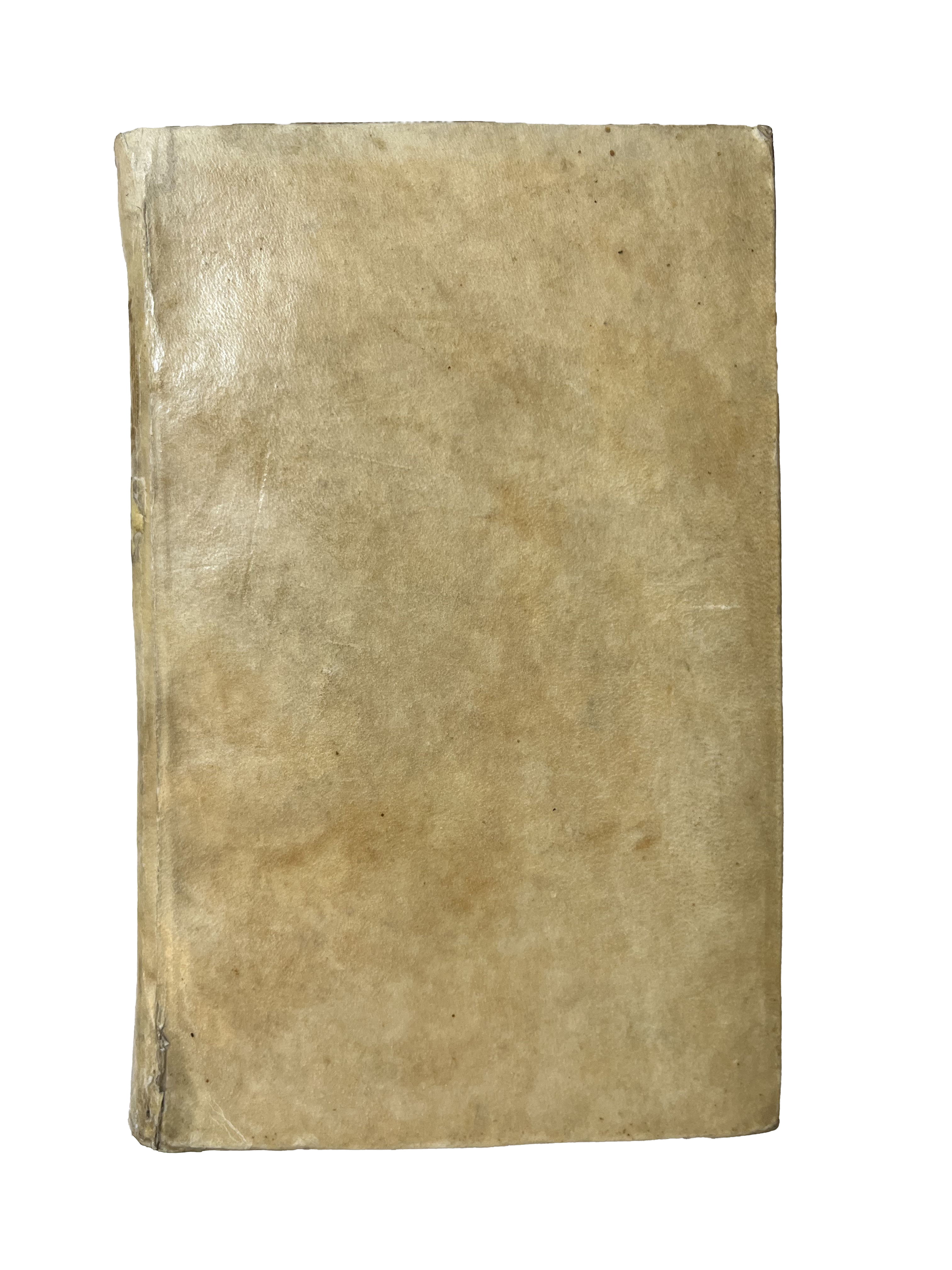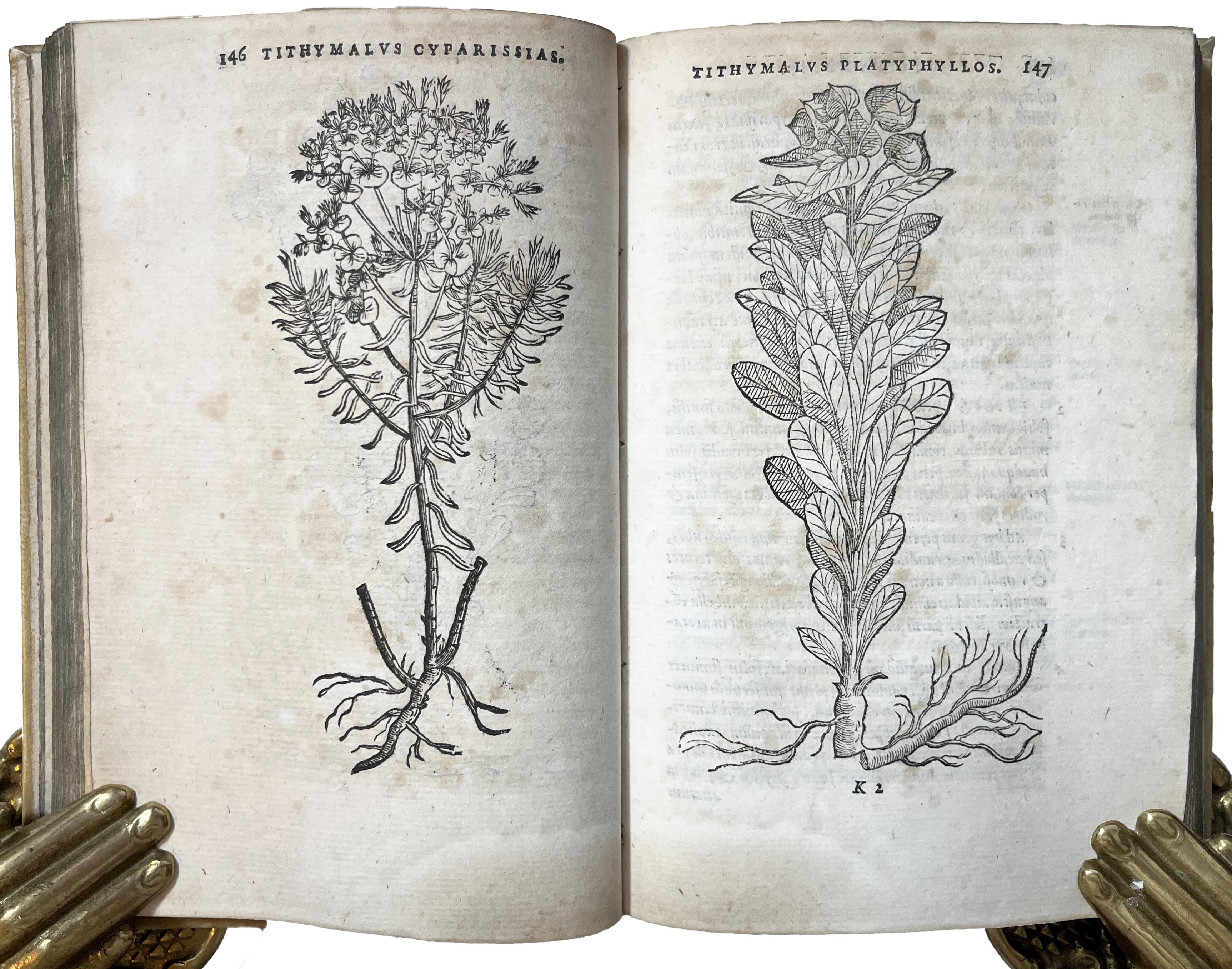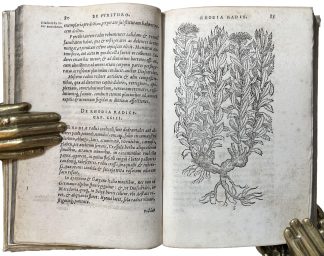DODOENS, Rembert.
LAVISHLY ILLUSTRATED POCKET HERBAL
Purgantium […] herbarum historiae Libri IIII. [with] Appendix rariarum […] stirpium.
Antwerp, C. Plantin, 1574£2,850.00
FIRST EDITIONS. 8vo. 2 parts in 1, continuous pagination, separate titles, pp. 505, [7]. Italic letter, little Roman. Woodcut printer’s device to titles, 140 + 79 full-page woodcut plants and herbs, decorated initials and ornaments. First title strengthened at gutter, couple of tiny worm holes at blank foot of first few gatherings, generally light browning, i6 a bit ink marked, tiny repair to upper edge of A8. A good copy in later vellum, spine gilt-lettered, late C17 autograph ‘Carolus Olivetanus’ (Charles Olivétan?) to verso of first title.
First edition of this lavishly illustrated pocket manual for physicians and botanists – one of the many superbly illustrated works produced by the Plantin press in Antwerp. Rembert Dodoens (or Dodonaeus, 1517-85) was a Flemish botanist, court physician to the Emperors Maximilian II and Rudolph II, and professor of medicine at Leiden. He is most renowned for his works on herbs and their medicinal properties published in Dutch, French, English and Latin, inspired by the contemporary writings of Leonhart Fuchs and, ultimately, by Dioscorides’s ‘De materia medica’. Dedicated to Philip II of Spain, the present is a study of plants and herbs traditionally used to purge and cleanse the body. For each of the over 100 plants discussed, he provides at least one handsome full-page woodcut. These woodcuts were produced by Peter vander Borcht, under the careful supervision of the botanist Charles L’Écluse, and were not originally intended for this work (Kusukawa, p.94). The text accompanying each woodcut includes a short description of the plant’s appearance, fruit, alternative names in various languages, habitat, smell, taste (e.g., Coriandrus has a ‘sour and pungent bitterness’ to it) and the most effective treatments that can be drawn from it, such as oils, liquors, teas and balms. Among the plants are the cyclamen, many types of valerian, bluebell, liquorice, poppy, sassafras and tarragon. Issued with the first work, the ‘appendix’ depicts over 40 rare herbs and plants, with new woodcuts, never previously seen. The preface provides Dodoens’ interesting observations on the process and quality of the illustrations (‘icones’) in the previous book, as well as others, as well as the importance of images in herbals. He also specifies botanic gardens where he found specimens he could copy, in Brussels and Antwerp. As always, Dodoens provides general information and at least one woodcut for each, among them being the ‘Iris Tuboerosa’, thistle, absinth, and the Moluccas (named after the islands whence they probably originated). ‘Included are chapters on ‘Hyoscyamus Peruvianus’ (tobacco) & ‘Zarsae Parillae’ (sarsaparilla), also designated as Peruvian’ (Alden). A most interesting, very handsome herbal.
USTC 401609; Belg. Typ. 961; Pettegree & Walsby 9961; Durling 1181; Thesaurus literaturae botanicae, p.378; Alden 574/16. Not in Wellcome, Heirs of Hippocrates or Osler. S. Kusukawa, Picturing the Book of Nature (2012).In stock






